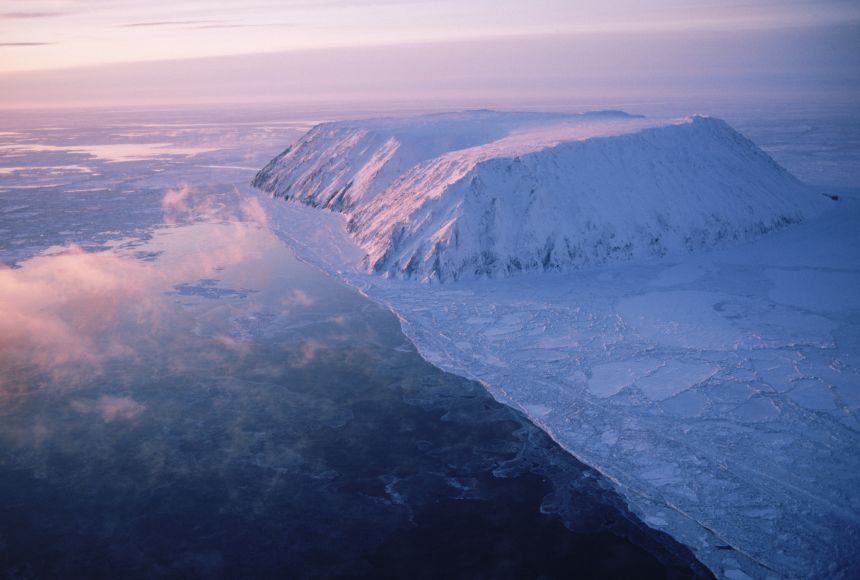Tundra ecosystems are treeless regions found in the Arctic and on the tops of mountains, where the climate is cold and windy, and rainfall is scant. Tundra lands are covered with snow for much of the year, but summer brings bursts of wildflowers.
Plants and Animals in Tundras
Mountain goats, sheep, marmots, and birds live in mountain—or alpine—tundra and feed on the low-lying plants and insects. Hardy flora like cushion plants survive in the mountain zones by growing in rock depressions, where it is warmer and they are sheltered from the wind.
The Arctic tundra, where the average temperature is -34 to -6 degrees Celsius (-30 to 20 degrees Fahrenheit), supports a variety of animal species, including Arctic foxes (Vulpes lagopus), polar bears (Ursus maritimus), gray wolves (Canis lupus), caribou (Rangifer tarandus), snow geese (Anser caerulescens), and musk oxen (Ovibos moschatus). The summer growing season is just 50 to 60 days, when the sun shines up to 24 hours a day.
The relatively few species of plants and animals that live in the harsh conditions of the tundra are essentially clinging to life. They are highly vulnerable to environmental stresses like reduced snow cover and warmer temperatures brought on by global warming.
Climate Change Impact on Tundras
The Arctic tundra is changing dramatically due to global warming, a term that falls within a wider range of trends scientists now prefer to call climate change. The impacts in this region are broad and somewhat unpredictable. Animals that are typically found farther south, like the red fox (Vulpes vulpes), are moving north onto the tundra. This means the red fox is now competing with the Arctic fox for food and territory, and the long-term impact on the sensitive Arctic fox is unknown.
Other tundra denizens, such as the wolf spider (Lycosidae spp.), are growing bigger and thriving. Shrubs are getting taller, contributing to declines in the sensitive groups of lichen that caribou and other species depend on for food. Lakes and ponds are evaporating or draining away.
Perma Defrost
The Arctic's permafrost, the literal foundation for much of the region's unique ecosystem, is deteriorating with the warmer global climate. Permafrost is a layer of frozen soil and dead plants that extends some 450 meters (1,476 feet) below the surface. In much of the Arctic, it is frozen year-round. In the southern regions of the Arctic, the surface layer above the permafrost melts during the summer, and this forms bogs and shallow lakes that invite an explosion of animal life. Insects swarm around the bogs, and millions of migrating birds come to feed on them.
With global warming, the fall freeze comes later—in some places recently, not at all—and more of the permafrost is melting in the southern Arctic. Shrubs and spruce that previously couldn't take root on the permafrost now dot the landscape, potentially altering the habitat of the native animals.
Another major concern is that the melting of the permafrost is contributing to global warming. The frozen ground contains about one and a half times the amount of carbon already in the atmosphere today, as well as large amounts of methane, another potent greenhouse gas. Until recently, the tundra acted as a carbon sink, capturing huge amounts of carbon dioxide from the atmosphere as part of photosynthesis. That process helped keep the amount of this greenhouse gas from accumulating in the atmosphere.
Today, however, as the permafrost melts and dead plant material decomposes and releases greenhouse gases, the tundra has flipped from a carbon sink to a carbon contributor. That means not only is the planet less capable of preventing greenhouse gases from accumulating, but the tundra is also contributing to their buildup. Scientists are still learning about what else the permafrost harbors, and what could be released as it thaws. Recently a study found that it is also the largest store of mercury on the planet and could release the toxic heavy metal into the environment, to harmful effect.
